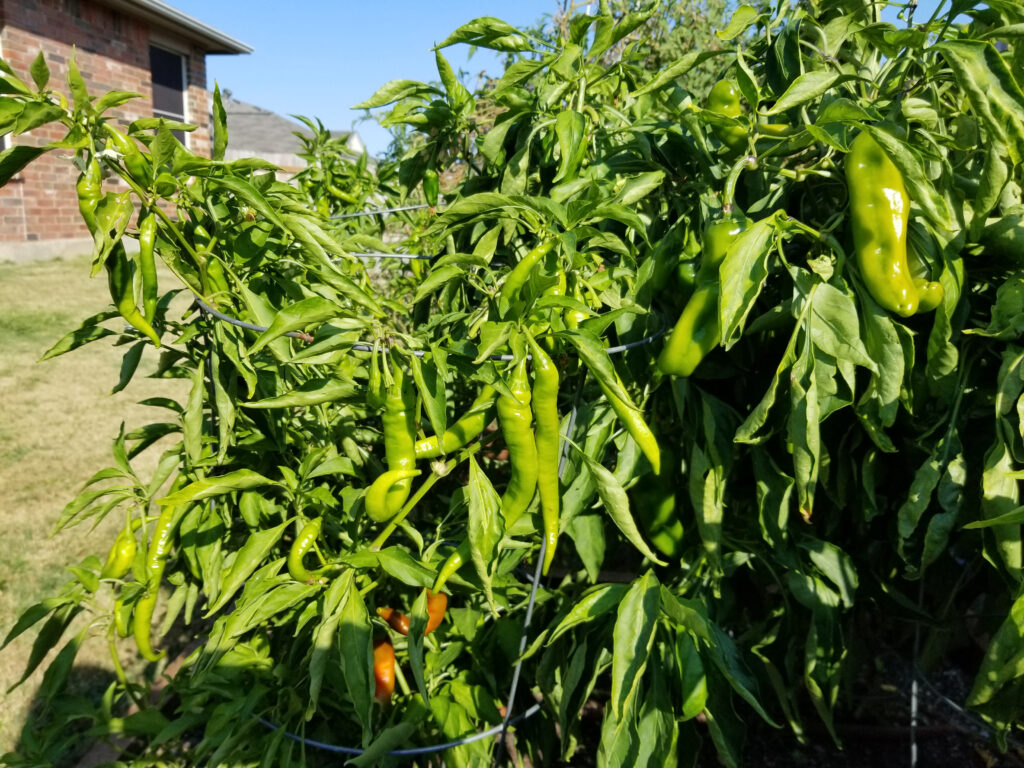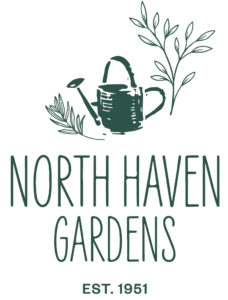
Instead of shopping at your local grocery store for fresh vegetables, why not harvest veggies directly from your very own garden?
Planting a vegetable garden in Texas means learning how to navigate our unique climate and planning accordingly. Even though we’re fortunate enough to have warm weather for most of the year, our hot summers (and even our mild winters) are a factor in your vegetable garden planning process.
North Haven Gardens is one of the best places to learn how to plant a vegetable garden in Texas. Our team is knowledgeable, friendly, and passionate about getting our hands in the dirt when it comes to helping new and seasoned gardeners alike. And to help you get started, we’ve created a short guide to vegetable gardening in Texas – let’s dig in!
Want To Speak With a Gardening Expert?
When to Plant Vegetables in Texas
Because our climate differs so dramatically from other parts of the U.S., it’s important to specifically research the best time to plant vegetables in Texas rather than rely on a generalized guide. For example, we can typically begin gardening in the spring much earlier than other regions. And, because our winters are fairly mild, many types of vegetables can continue to grow successfully from late fall through the winter.
But with Texas being such a large state, gardening guidelines vary even from city to city. Here in the Dallas area, you can expect our last frost date to fall around the third week of March, while the first frost date doesn’t usually occur until mid-November. This is much different from the growing seasons in Corpus Christi or Laredo, for example.
Dallas and its nearby communities fall in USDA Hardiness Zone 8. Much of Northern Texas falls into Zone 7. This information will be very useful when you’re deciding when and what to plant.
Tips for Vegetable Gardening in Zone 8 (North Texas)
Keep these top tips in mind for planning, starting, and maintaining a vegetable garden.
- Use your resources.
There are so many ways to learn about Dallas gardening, including an array of resources available right here on the North Haven Gardens website. Take advantage of as many of these resources as you can, and you’ll be armed with plenty of knowledge for your gardening journey:- Plant Lists for Dallas
- Project Lists and Reference Guides
- Our Video Library and blogs
- The Texas Cooperative Extension Vegetable Gardening Guide
We also offer our Garden Coach Program, which can be incredibly helpful for beginning gardeners who would like personalized advice as they begin their herb & veggie gardens or other landscape plantings.
- Choose the right location.
Generally, an edible garden requires at least six hours of sun each day in order to produce vegetables. Selecting a garden location is one of the most important decisions you’ll make. In addition to sun/shade, consider an accessible water source and available space as well. - Properly prepare your soil.
Whether you’re going to use raised beds and containers for vegetable gardening or you’ll be planting directly in the ground, preparing the soil makes a big difference in your gardening success. Look for soil mixes specifically designed for raised beds or soil amendments to add vital nutrients for in-ground planting. - Make a plan before you start planting.
There are many factors to consider in setting up your garden layout: allowing enough room for mature plants, attracting pollinators, identifying and controlling pests and more. Figure out which garden design will check as many of these boxes as possible so that you can maximize space and growing success. - Remember that gardening is a learning experience.
Starting small is usually the best move for new gardeners, especially to keep your to-do list more manageable. But you can expand your efforts every year, so don’t be afraid to dream big. Remember: there is no “failing” in the garden – every challenge is a lesson in strengthening your green thumb!
Use Our Convenient Zone 8 Planting Calendar
Navigating the Texan climate for gardening in USDA Hardiness Zone 8 requires strategic planning, and nothing beats a planting calendar to keep you on track. At North Haven Gardens, we understand the unique challenges and opportunities of gardening in Texas. Our team is dedicated to providing practical advice and support for gardeners of all levels. By following a planting calendar tailored to Zone 8, you’ll maximize your harvest potential and ensure your garden thrives year-round.
North Texas Seasonal Planting Timeline
Simplify your gardening experience using our planting calendar for vegetables in North Texas.
Note: (O) indicates to seed or plant outdoors, while (IN) indicates to seed indoors and then transplant.
Spring Gardening in Zone 8
For a spring harvest, follow these guidelines. You can also explore our spring planting and gardening guide for more in depth informaiton on what and how to plant in the springtime.
January
Seeds
- Onions (sets/slips), leeks (O)
- Broccoli (IN)
- Cauliflower (IN)
- Collard greens (IN)
- Kale (IN)
- Lettuce (IN)
- Tomatoes (IN)
- Spinach (IN/O)
- Swiss chard (IN/O)
- Eggplants (IN), late January
- Peppers (IN), late January
February
Seeds
- Eggplants (IN)
- Leeks (IN/O), Feb. 10th – Feb. 25th
- Peas (O), ideally no later than Feb. 10th
- Peppers (IN)
- Potatoes (O)
- Beets (O), until March 15th
- Carrots (O), until March 15th
- Collard greens (O), until March 15th
- Kale (IN/O), until March 15th
- Kohlrabi (O), until March 15th
- Lettuce (O), until March 15th
- Mustard greens (O), until March 15th
- Scallions (O), until March 15th
- Spinach (O), until March 15th
- Swiss chard (O), until March 15th
- Turnips (O), until March 15th
- Radish (O), Feb. 5th – May 1st
Crowns
- Asparagus
- Horseradish
- Rhubarb
Transplants
- Broccoli
- Brussels sprouts
- Cabbage
- Cauliflower
- Chinese cabbage
- Kohlrabi
- Tomato, late February – April 1st
March
Seeds
- Beets (O), until March 15th
- Carrots (O), until March 15th
- Collard greens (O), until March 15th
- Kale (IN/O), until March 15th
- Kohlrabi (O), until March 15th
- Lettuce (O), until March 15th
- Mustard greens (O), until March 15th
- Scallions (O), until March 15th
- Spinach (O), until March 15th
- Swiss chard (O), until March 15th
- Turnips (O), until March 15th
- Radish (O), until May 1st
- Bush (O), March 15th – April 20th
- Lima beans (O), March 15th – April 20th
- Pole beans (O), March 15th – April 20th
- Cantaloupe (O), March 15th – May 1st
- Watermelon (O), March 15th – May 1st
- Corn (O), March 15th – mid-June
- Cucumbers (O), March 15th – mid-June
- Squash (O), March 15th – mid-June
- Zucchini (O), March 15th – mid-June
- Pumpkin (O), March 25th – April 30th
Transplants
- Tomatoes, until April 1st
- Cucumbers, March 15th – mid-June
- Peppers, March 15th – mid-June
- Squash, March 15th – mid-June
- Watermelon, March 15th – mid-June
- Zucchini, March 15th – mid-June
- Pumpkin, March 25th – April 30th
April
Seeds
- Black-eyed peas (O), April 1st – mid-June
- Okra (O), April 1st – mid-June
- Bush (O), until April 20th
- Lima beans (O), until April 20th
- Pole beans (O), until April 20th
- Pumpkin (O), until April 30th
- Radish (O), until May 1st
- Cantaloupe (O), until May 1st
- Watermelon (O), until May 1st
- Corn (O), until mid-June
- Cucumbers (O), until mid-June
- Squash (O), until mid-June
- Zucchini (O), until mid-June
Transplants
- Pumpkin, until April 30th
- Eggplant, April 1st – mid-June
- Okra, April 1st – mid-June
- Sweet potato slips, until May 15th
- Cucumbers, until mid-June
- Peppers, until mid-June
- Squash, until mid-June
- Watermelon, until mid-June
- Zucchini, until mid-June
May & June
Seeds
- Tomatoes (IN/O), until May 15th
- Black-eyed peas (O), until mid-June
- Okra (O), until mid-June
- Corn (O), until mid-June
- Cucumbers (O), until mid-June
- Squash (O), until mid-June
- Zucchini (O), until mid-June
Transplants
- Sweet potato slips, until May 15th
- Eggplant, until mid-June
- Okra, until mid-June
- Cucumbers, until mid-June
- Peppers, until mid-June
- Squash, until mid-June
- Watermelon, until mid-June
- Zucchini, until mid-June
Summer Planting & Gardening for Zone 8
With our hot summers and extended growing season in North Texas, there are also a number of things you can plant in your garden in the summertime. You can read our guide on summer planting and gardening in Texas for more information on how to expand you’re garden throughout the summer months.
Fall Gardening in Zone 8
For a fall harvest, follow these guidelines. You’ll notice that, for many vegetables, there is a “second” planting season in mid- to late fall. You can also explore our other resources related to tips for fall planting in Texas.
May, June, & July
Seeds
- Cantaloupe (O), May 1st – July 25th
- Watermelon (O), May 1st – July 25th
- Eggplant (IN/O), May 1st – July 25th
- Black-eyed peas (O), July 1st – August 15th
- Southern peas (O), July 1st – August 15th
- Winter squash (O), July 1st – August 10th
- Okra (IN/O), July 15th – August 15th
- Pumpkin, small varieties (O), July 15th – August 15th
Transplants
- Eggplant, May 1st – July 25th
- Tomatoes, late June – mid-July
August
Seeds
- Broccoli (IN) until August 25th, (IN/O) August 25th – October 15th
- Brussels sprouts (IN) until August 25th, (IN/O) August 25th – October 15th
- Cabbage (IN) until August 25th, (IN/O) August 25th – October 15th
- Cauliflower (IN) until August 25th, (IN/O) August 25th – October 15th
- Corn (O), until August 25th
- Cucumbers (O), until August 25th
- Kohlrabi (IN), until August 25th
- Mustard greens (IN), until August 25th
- Pole beans (O), until August 25th
- Spinach (IN) until August 25th, (IN/O) August 25th – October 15th
- Summer squash (O), until August 25th
- Sweet corn (O), until August 25th
- Swiss chard (IN) until August 25th, (O) August 10th – late Sept.
- Zucchini (O), until August 25th
- Pinto beans (O), until Sept. 15th
- Snap bush beans (O), until Sept. 15th
- Yellow bush beans (O), until Sept. 15th
- Chinese cabbage (IN/O), August 10th – late Sept.
- Collard greens (IN/O), August 25th – Oct. 15th
- Garlic (O), August 25th – Oct. 15th
- Lettuce (IN/O), August 25th – October 15th
- Kale (IN/O), August 25th – October 15th
- Kohlrabi (IN/O), August 25th – October 15th
- Radishes (IN/O), August 25th – October 15th
- Turnips (IN/O), August 25th – October 15th
Transplants
- Chinese cabbage, August 10th – late Sept.
September
Seeds
- Cucumber (O), until Sept. 15th
- English/French peas (O), until September 15th
- Pinto beans (O), until Sept. 15th
- Snap bush beans (O), until Sept. 15th
- Yellow bush beans (O), until Sept. 15th
- Beets (O)
- Carrots (O)
- Chinese cabbage (O)
- Parsnips (O)
- Swiss chard (O)
- Broccoli (IN/O), until October 15th
- Brussels sprouts (IN/O), until October 15th
- Cabbage (IN/O), until October 15th
- Cauliflower (IN/O), until October 15th
- Collard greens (IN/O), until October 15th
- Garlic (O), until Oct. 15th
- Spinach (IN/O), until October 15th
- Leeks (IN/O), until Oct. 31st
- Lettuce (IN/O), until October 15th
- Kale (IN/O), until October 15th
- Kohlrabi (IN/O), until October 15th
- Onions (IN/O), until Oct. 31st
- Radishes (IN/O), until October 15th
- Turnips (IN/O), until October 15th
Transplants
- Broccoli
- Brussels sprouts
- Cabbage
- Chinese cabbage
- Kohlrabi
- Lettuce
- Leeks, until Oct. 31st
October
- Garlic cloves
- Shallot bulbs
- Leek transplants
From mid-September through the winter
Transplants
- Collard greens
- Kale
- Mustard greens
- Swiss chard
- Spinach
Winter Planting in Zone 8
While the winter time might seem like the least valuable time of year for your garden, the warm Texas climate allows for certain plants to be started and even grow continuously through the winter months. You can explore our in depth guide to learn more about winter gardening in Texas.
Become More Skilled at Gardening in Texas with Education and High-Quality Plants from North Haven Gardens
At our Dallas nursery, our mission isn’t simply to sell plants. Ultimately, our goal is to support Dallas-area locals in creating beautiful outdoor spaces that suit their lifestyles. Whether you’re interested in learning about edible gardening, growing gorgeous flowers for arrangements and bouquets, or setting up a low-maintenance and water-wise yard, we have the expertise, plants, and products to help your garden flourish.
Learn more about gardening in Texas and find the healthy, happy plants and gardening know-how you need at North Havens Gardens. Plus, we now offer plant delivery if (within our service area, please call for details) so that you can get your favorite plants and garden supplies right to your door.
Featured Image: Investment Fertilizer/Shutterstock



